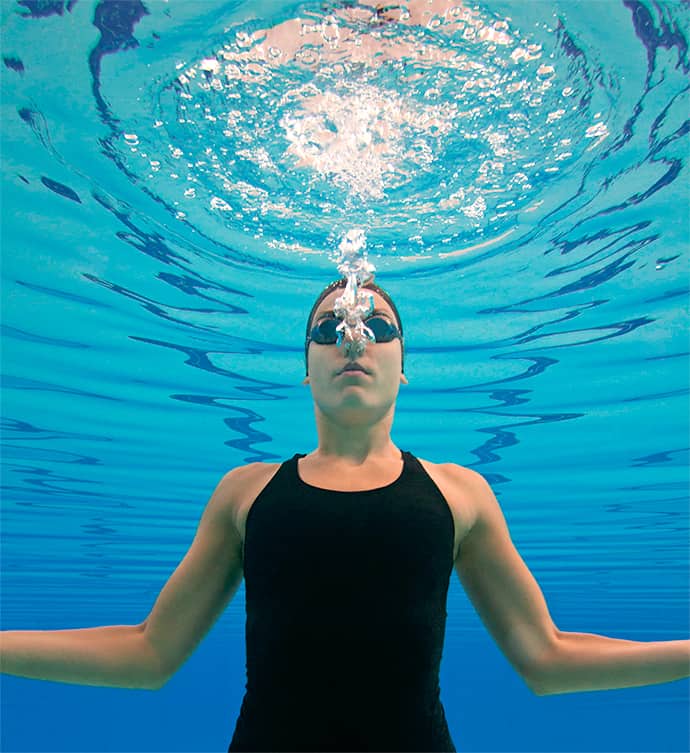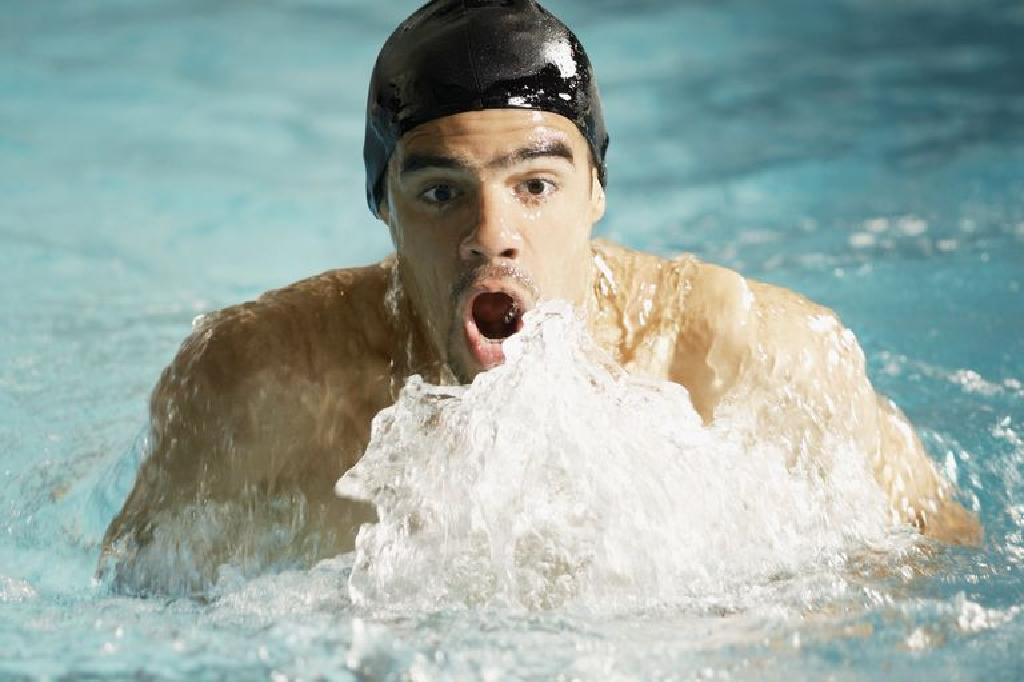Go Swim Istanbul

Teaching breathing in swimmingOr the method of self-regulation in swimming is one of the most important skills in swimming and is almost the most important corner in teaching swimming, as it has many benefits for mastering swimming and some movements under water.
Mastering the breathing process is an essential part of your swimming performance, and you may encounter some difficulties in that, especially when entering and exiting the water. The swimmer must exhale air from his chest as much as possible during exhalation, whether through the nose or mouth.
And that this regular breathing pattern is your key to effective swimming and learn other skills such as buoyancy, underwater swimming, breaststroke swimming, freestyle swimming and others.
The importance of teaching breathing in swimming
The importance of learning to regulate oneself under water is one of the most important basic skills in swimming, as regulating breathing helps increase self-confidence and remove the fear of water factor.
And we begin to regulate the breath in the shallow area and then the deep area, and it is by taking an inhale from the mouth and going down under the water and exhaling from the mouth and nose under the water, then we repeat this movement several times
The benefits of self-regulation during the swimming process
- Regulating breathing while swimming helps regulate the heartbeat, which prevents you from having a heart attack while swimming.
- Strengthens your ability to continue swimming for a longer time without muscle tension, as when regulating breathing, the muscles will take the oxygen they need to keep working.
- help process Teaching breathing in swimming In strengthening the lungs and increasing their endurance while swimming.
- Self-regulation helps you acquire many skills such as swimming underwater, diving, and others.
- When you master the skill of self-regulation, you will be able to focus on your next goal without any other worries.

Learn about free swimming lessons for children
Types of breath in swimming
Self-regulation in the water is an acquired skill that the individual can use with continuous training to sit for a long time under water without the need for air
The types of breathing under water or while swimming vary according to the method used for swimming. There are several ways to breathe under or during swimming, including:
- Taking a lateral breath by breathing above the water by swimming with the head above the water and breathing by making the head either through the right or left side
- Holding the breath and then exhaling air from the mouth just under the water.
- Hold your breath while swimming and blow air out of your nose only in the form of bubbles.
- Muting the breath and then exhaling it from the mouth and nose in a double.

Learn about the skills and benefits of learning to swim for men
Steps to teach breathing in swimming
In order for you to master the process Teaching breathing in swimming And to regulate the breath in the water or while swimming, you must master and practice some exercises that help you to prolong the time of holding your breath and the way to inhale air during the swimming process, whether breaststroke, freestyle, butterfly and others.
First exercise
Hold your breath out of the water:
At first, you should take a big breath, then hold your breath, count to ten, and then exhale.
The second exercise:
Taking a big breath, lowering the face into the water and trying to count to the number ten, then going up and exhaling the air.
The third exercise
Controlling the exit of breath from the mouth through three steps
Firstly: (Out of the water) Take a deep breath and exhale the air from the mouth, repeating this step ten times.
Secondly: (Inside the water) Take a deep breath and then lower half of the face under the water (mouth) and exhale from the mouth into the water with repeating the exercise ten times and each time taking a breath and then descending into the water.
Third: (Inside the water) This step is the important step where you must take a big breath and then go under the water and remove the air from the mouth through bubbles and in a gradual manner until the end of the breath and then go back up and take the air quickly and repeat the exercise up to five times.
Fourth exercise:
Control of the exit of the breath from the nose
Firstly: Taking a breath and controlling the exhalation of the breath from the nose without opening the mouth, placing the hand over the mouth and breathing in so that no air comes out of the mouth, repeating this step ten times
Secondly: (Inside the water) To control the exhalation of the breath into the water through the nose, and you must repeat this process as much as you can.
Third: Repeat the exit of the breath into the water through the nose by taking the breath out of the water and re-entering the water quickly. The exercise can be repeated as much as you can, preferably five times.
Fifth exercise:
Extinguishing the breath from the mouth and nose together into the water by taking a deep breath and descending under the water halfway through the face and then repeating the exercise with the face gradually lowering to the point of taking the breath under the water through the mouth and nose together.
You may like to read the article on teaching swimming for adults and children with special needs
Tips and advice for teaching breathing in swimming
In order to be able to acquire the skill of regulating breathing in water, you should take several steps and take into account some precautions, and here are some tips that you must take into account during Teaching breathing in swimming
- At the outset, we should note that when starting to Teaching breathing in swimming You must first learn at a lower level.
- Do not do exercises directly at the sea, because holding your breath for a long time may lead to loss of consciousness.
- Training gradually and not straining your lungs in learning to breathe underwater, so that you can master the skill of breath regulation in the water.
- If you suffer from heart, pressure or lung problems, avoid it completely and preferably not be alone while doing this exercise

The most important frequently asked questions about teaching breathing in swimming
What is a good way to learn to breathe in swimming?
You must first learn how to take a breath in a regular manner before entering the water, through some exercises that increase the readiness of your body to regulate the breath in a correct manner.
Can breathing in swimming be taught to children?
Yes, children can acquire the skill of regulating breathing through some simple exercises that help them increase their confidence in the water and strengthen them to enter the stage of learning to swim and dive.
What is the longest time you can hold your breath underwater?
Without training, a person can hold their breath for about 90 seconds, before they need to take a breath. But with training, a person achieves the possibility of self-regulation and achieving new records in this
Swimming Lessons in Istanbul
Baby Swimming Lessons in Istanbul
Free Diving & Scuba Diving Lessons in Istanbul
